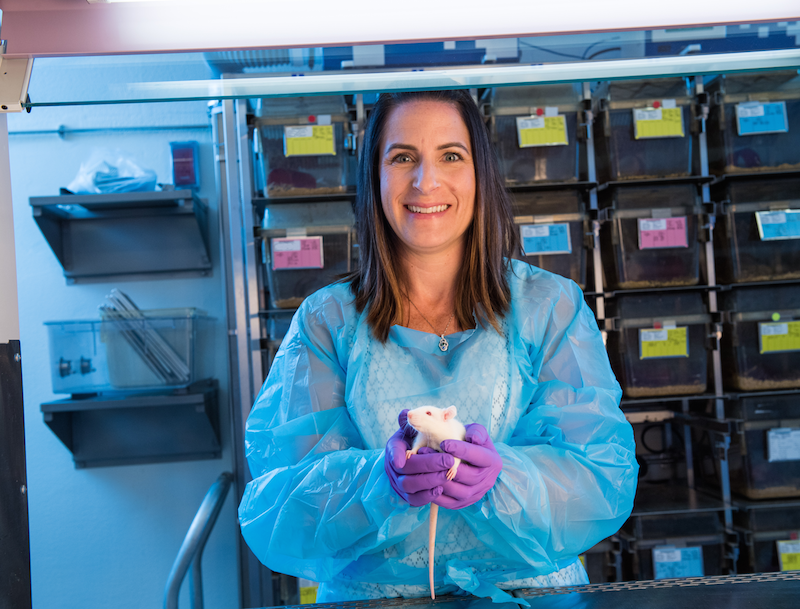“We love animals, and we love people, and that’s why we do the job we do.”

That short and simple sentiment says it all about the men and women responsible for the care of U-M’s laboratory animals. They do what they do, says U-M’s Attending Veterinarian Robert C. Dysko, D.V.M., DACLAM, because they know that responsible animal research can improve both human health, and animal health, worldwide.
In fall 2012, he and his colleagues marked the 50th anniversary of the Unit for Laboratory Animal Medicine, or ULAM. That’s the division of the U-M Medical School that provides animal care and research expertise to more than 500 scientific teams from all over U-M.
Partners in Discovery
More than 250,000 animals, from mice and rats to sheep and pigs, are in the care of the 190 veterinarians, veterinary technicians, animal care technicians and support staff who make up ULAM.
Without them, U-M researchers would have a much harder time making discoveries in animals that may someday improve the health of human patients. That’s what drove U-M to develop one of the nation’s first laboratory animal medicine programs in 1962. Bennett Cohen, D.V.M., considered a pioneer of the field, founded the unit and led it for 23 years.
Today, ULAM is one of the nation’s most highly regarded programs both for animal care, and for the postdoctoral training of veterinarians who specialize in laboratory animal medicine. Dysko was once one of those young trainees himself. The 100th trainee entered the program in the summer of 2012.
Around the same time, Dysko took the reins of the unit, succeeding Howard Rush, D.V.M., M.S., who returned to his faculty post in 2011 after 10 years as director. Rush had succeeded Dan Ringler, D.V.M., who directed the unit from 1985 to 2000 after Cohen stepped down.
Leading the Nation
Fifty years ago, animal use in research was important, but not yet seen as a field of its own. Cohen helped change that at U-M and around the country. He co-founded the field’s first professional society, the American Association of Laboratory Animal Science, and the American College of Laboratory Animal Medicine.
He also chaired the National Academy of Science committee that wrote the first edition of the Guide for the Care and Use of Laboratory Animals, and helped found the American Association for Accreditation of Laboratory Animal Care, which performs accreditation checks of animal research facilities worldwide.
Over time, Dysko says, the field grew as medical research grew – and then exploded with the development of the first transgenic mice in the 1980s. Being able to study specific genetic mutations in specially bred mice helped bring about many of the medical discoveries and innovations of the past three decades.
U-M has even helped develop many of these transgenic mouse strains in the Transgenic Animal Model Core, one of the biomedical research core facilities that works closely with ULAM. Today, says Dysko, the drive to speed up the pace of translating laboratory bench research into human diagnostics and treatments means an increasing demand for lab animal care. At the same time, ULAM is always working to help researchers keep the number of animals they use to a minimum.
New technologies help, such as bioluminescence-based imaging techniques that enable researchers to see what is happening inside an animal without having to euthanize it. The University even has small CT scanners, MRI machines and PET scanners just for animals. By balancing the need for medical research with a respectful, caring attitude toward animals, ULAM’s team helps researchers make new discoveries every day.
Those discoveries can also help animals: A “one health” concept that ties human and animal medicine together, especially in the area of infectious diseases, is gaining steam worldwide.
All of U-M’s animal research activity takes place under the watch of the Institutional Animal Care & Use Committee, or IACUC, a division of the Vice President for Research’s Office that oversees the responsible, justified, and humane care of animals in all areas of U-M. Together, ULAM and IACUC make sure U-M’s research community can continue to produce important research results, and treat animals respectfully — as partners in discovery.
“We’re looking forward to the next 50 years,” says Dysko.